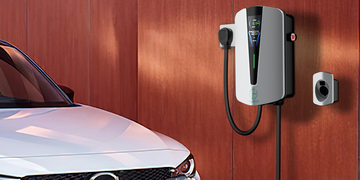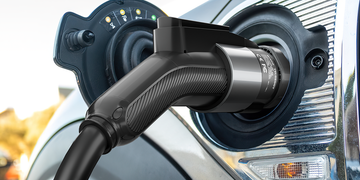How does electric vehicle charging work? The rapid evolution of automotive technology has paved the way for a cleaner and more sustainable mode of transportation – electric vehicles (EVs). One of the key components of the electric vehicle ecosystem is the charging infrastructure. In this article, we will delve into the mechanics of electric vehicle charging, exploring the various charging methods, charging stations, and the future outlook of EV charging.
What is an EV charger?
Technically, EV chargers are called electric vehicle supply equipment (EVSE). It's used to charge both electric vehicles and plug-in hybrids, just like your normal, run-of-the-mill rechargeable devices.
While filling up a conventional internal combustion engine merely takes a few minutes, charging electric cars could take longer.
But with ongoing developments in the electric vehicle industry, it won't be long before electric car drivers enjoy ultra-fast charging with rapid chargers.

Types of Electric Vehicle Charging:
Level 1 Charging:
Level 1 charging is the most basic form of charging and involves using a standard household electrical outlet. This method typically operates at 120 volts AC and offers a slow charging rate. While convenient for overnight charging, it may not be practical for daily use due to the extended charging times.
Level 2 Charging:
Level 2 charging utilizes higher voltage (usually 240 volts AC) and offers a faster charging rate compared to Level 1. Many public charging stations and home charging units fall under this category. Level 2 charging is suitable for both residential and commercial use, providing a balance between charging speed and infrastructure cost.
DC Fast Charging:
DC (Direct Current) fast charging is the quickest charging method available for electric vehicles. It operates at much higher power levels and uses direct current to charge the vehicle's battery rapidly. DC fast charging stations are commonly found along highways and major routes, making long-distance travel more convenient for EV owners.
Charging Stations:
Home Charging:
Home charging is the most convenient and common method for EV owners. Level 1 and Level 2 chargers can be installed at home, allowing users to charge their vehicles overnight. This provides a full charge by the morning, ensuring the car is ready for daily use.
Public Charging Stations:
Public charging stations are strategically located in urban areas, shopping centers, and along highways. These stations offer Level 2 and DC fast charging options, providing flexibility for EV owners who need to charge their vehicles while away from home. Many public charging stations are part of growing networks that offer user-friendly mobile apps for locating and accessing charging points.
Charging Protocols:
Electric vehicles are equipped with charging ports that adhere to different charging protocols. The most common standards include:
CHAdeMO:
Developed in Japan, CHAdeMO is a DC fast charging protocol widely used by Asian automakers. Many electric vehicles from Nissan, Mitsubishi, and Kia support CHAdeMO charging.
CCS (Combined Charging System):
CCS is a standardized DC fast charging protocol embraced by major automakers in North America and Europe. It combines both AC and DC charging, making it versatile for various charging scenarios.
Tesla Supercharger:
Tesla has its proprietary Supercharger network, specifically designed for Tesla vehicles. While Tesla cars also support other charging standards with adapters, the Supercharger network offers high-speed charging exclusively for Tesla owners.
How does EV charging work?
An EV charger pulls electrical current from either a 240-volt outlet or the electric grid it's hardwired to and delivers electricity to your electric vehicle, just like any other device you plug into your wall outlet.
How does electric vehicle charging work? Understanding how electric vehicle charging works is essential for both current and prospective EV owners. With advancements in technology and infrastructure, electric vehicles are becoming a viable and sustainable choice for environmentally conscious consumers. The future of electric vehicle charging holds exciting possibilities, promising more efficient and widespread access to charging solutions for all electric vehicle users.





